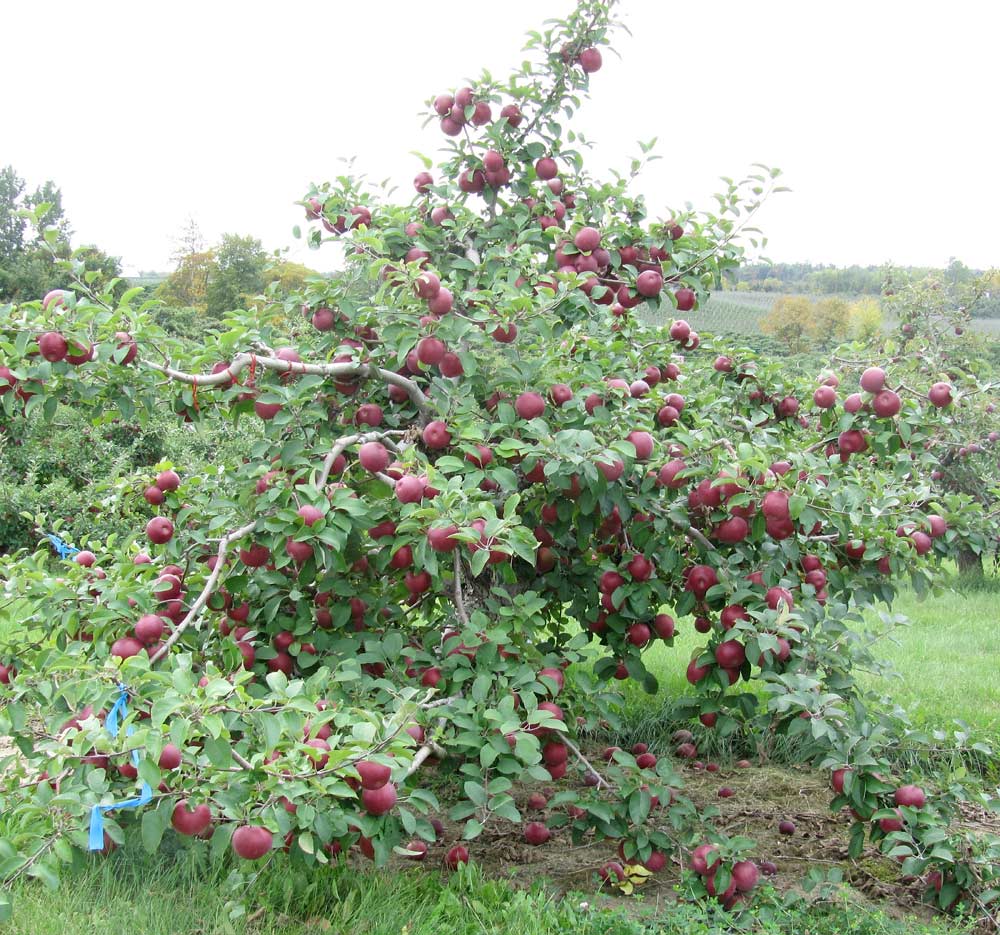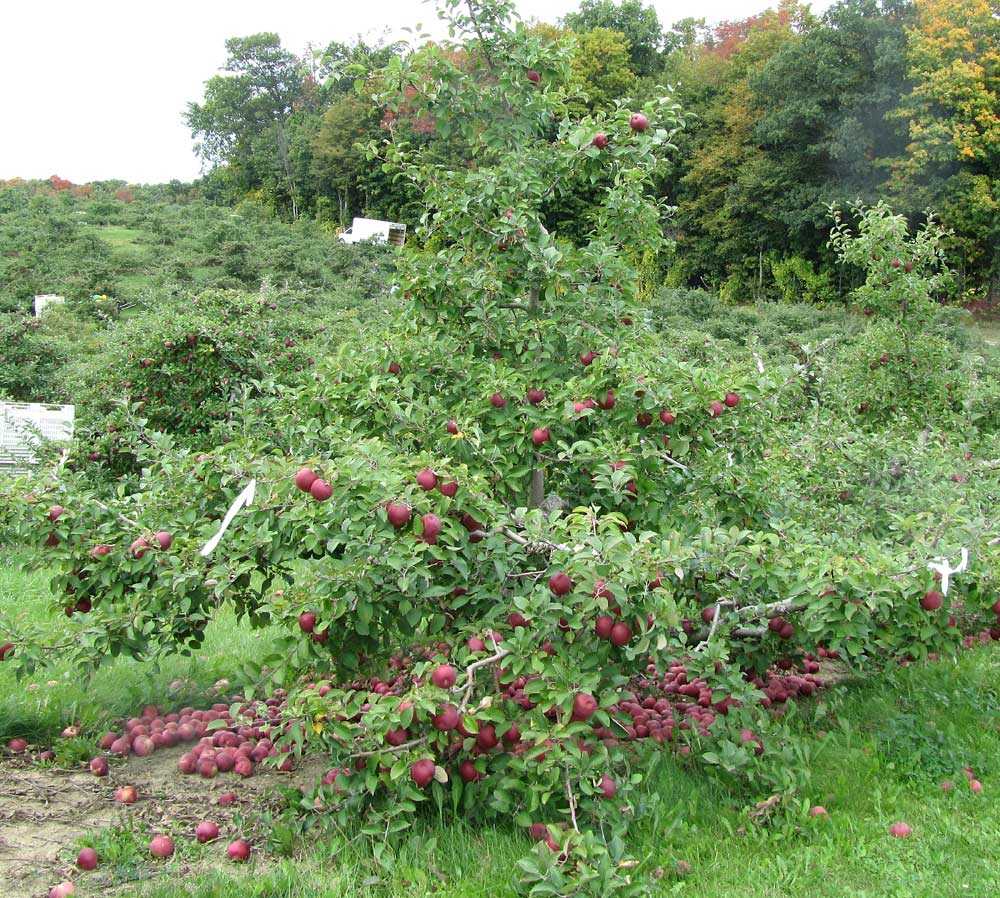Managing McIntosh harvest is not for the faint of heart. The fruit is prone to drop but doesn’t get good color until the end of the season when nights get cold; growers often walk a fine line waiting to pick to maximize color but before a sudden drop.
That’s why Canadian growers are eager to try out Harvista, the pre-harvest formulation of ethylene-blocking 1-MCP from postharvest chemical manufacturer AgroFresh.
Although it’s been commercially available in the U.S. for several years, it was just registered in Canada for use on apples in time to manage this year’s harvest.
It has a different mode of action than other stop-drop products already on the market. Growers in the U.S. have used it for several years to manage harvest labor and improve fruit quality for some varieties.
“It’s really just a fabulous product for McIntosh specifically,” said Jennifer DeEll, a postharvest researcher for the Ontario Ministry of Agriculture, Food and Rural Affairs.
That’s because McIntosh fruit produce 10 to 20 times more ethylene than most apple varieties, which accelerates ripening and drop.
“It’s always a battle to get the red color. Being able to hold the fruit on the tree that much longer, they can get better red color, better grades, and reduce fruit loss to drop,” DeEll said.
Citing her own experiments with the product, she said Harvista gave trees about twice as much drop control as other products tested.
Cornell experiments have also found that Harvista delays drop in McIntosh about 20 days after predicted harvest, longer than its competitors.

The value of Harvista in preventing drop in McIntosh apples is illustrated in these October, 2013 photos from an field trial by the Ontario Ministry of Agriculture, Food and Rural Affairs. This tree was treated with Harvista three weeks before the photo was taken and the untreated tree, below, was not. (Courtesy Jennifer DeEll)

In a 2013 field trial by the Ontario Ministry of Agriculture, Food and Rural Affairs this tree was not treated with Harvista. (Courtesy Jennifer DeEll)
It has a different mode of action than ReTain, the stop-drop product produced by Valent, which relies on the growth regulator aminoethoxyvinylglycine to block the production of ethylene in the fruit for a period of time.
By contrast, 1-methylcyclopropene, the active ingredient in both Smartfresh and Harvista, blocks ethylene receptors so the fruit cannot respond to the ethylene it is producing.
ReTain is commonly used in the Northeastern U.S. and Canada to stop drop in McIntosh and to delay maturity in varieties such as Gala and Cortland.
Some growers also use ReTain in conjunction with NAA, the growth regulator naphthaleneacetic acid, which acts as a stop drop but also advances maturity of some varieties, including McIntosh.
Harvista has benefits beyond its use as a stop-drop, said Keith Culver, the commercial manager for AgroFresh in the Eastern U.S. and Canada.
“Some customers have issues around labor or varieties that come all at the same time, so if they can delay part of the pick, that’s a huge advantage,” Culver said. “On varieties like Honeycrisp, there are quality benefits such as acid retention, and we’re enabling fewer picks so that growers can pick more fruit in a pass, so we can reduce their labor costs significantly.”
And unlike the first few years of Harvista use in the U.S. when AgroFresh applied the product for growers, the company is now working to outfit growers in Canada and the U.S. with the equipment they need to apply Harvista themselves. Culver said that this new approach makes it easier for growers to apply the product at the optimum time.
Now, growers can buy specialized sprayers or kits to adapt their existing sprayers for the product. They planned to equip about 25 to 30 sprayers in Canada this year, Culver said.
DeEll plans to continue her research on the product this season, looking at how to perfect the timing of the product on different varieties and how best to combine preharvest use of 1-MCP with postharvest 1-MCP treatments. Her earlier research shows that Harvista does not replace the need for postharvest treatment.
“It won’t stand alone. It adds a little effect, but a few weeks after harvest it will fade rapidly if you don’t have a postharvest treatment,” she said. “It behaves in a similar manner to postharvest 1-MCP in that it can aggravate stress disorders like carbon dioxide injury. But if the disorder is related to senescence, ripening, then the 1-MCP will reduce it.” •
– by Kate Prengaman






Leave A Comment